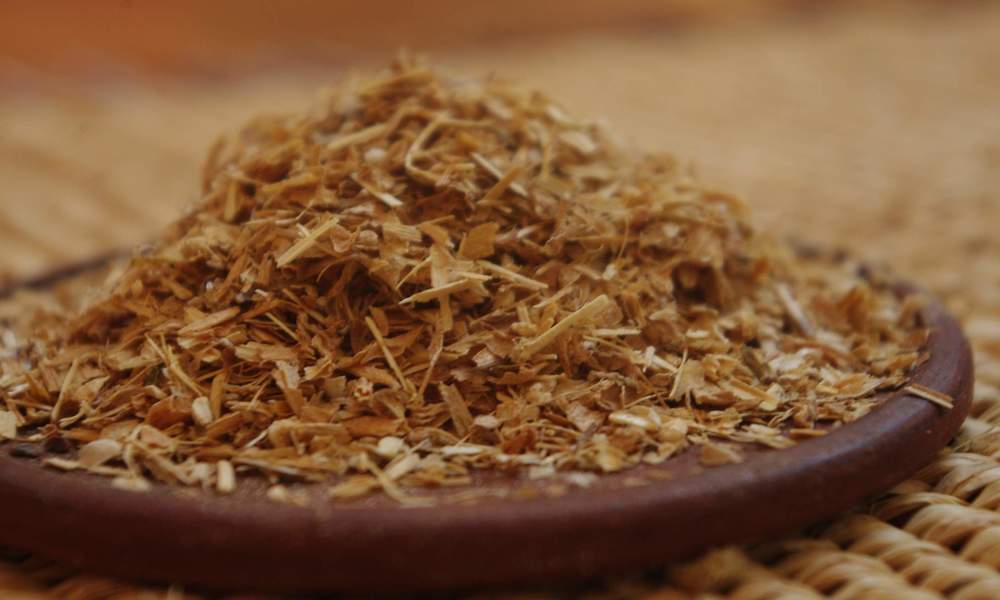
Chewing the leaves of this plant might cause strong antidepressant effects
With our website name being Avalon Magic Plants, it should be no surprise to you that we have some special and almost magical plants in our line of products. One of them is Sceletium tortuosum, better known as Kanna. This succulent plant grows about 30cm tall and is native to South Africa, where it was traditionally used to relieve pain and reduce hunger. Nowadays, numerous scientific studies have pointed out that kanna could decrease anxiety, stress and tension.
Although we make no claims to any medical value of Kanna, it does appear as though it may act in a manner similar to many common antidepressant medications available through pharmaceutical companies. One of the active alkaloids in kanna is Mesembrine, which has ancedotally been reported to possibly be a potent selective serotonin re-uptake inhibitor (SSRI) with very strong antidepressant effects.
Kanna history
For more than two centuries Dutch explorers recorded the use of Sceletium tortuosum by the hottentots of South Africa. The tribes chewed a preparation made from the root and fermented leaves of this particular bush, as a powerful inducer of visions, intoxication and mood enhancer. The South-African pastoralists, hunter-gatherers and shepherds chewed on the plant while walking long distances in arid areas to suppress their appetite.
It was the Dutch explorer Van Riebeeck who first reported about Kanna usage in South Africa in 1662. He found out about the plant’s effects and later made barter deals with locals for Sceletium and sheep. Then, around 20 years later, Dutchman Simon van der Stel described the local use of kanna in his journal, stating: ‘They chew mostly a certain plant which they call Canna and which they bruise, roots as well as the stem, between the stones and store and preserve in sewn-up sheepskins. When we came to the Coperbergh in October, it was being gathered from the surrounding hills by everybody (to serve as a supply for the whole year).’
Then, almost a century later in 1773, a Swedish botanist and physician named Carl Peter Thunberg described a similar story: ‘The Hottentots come far and near to fetch this shrub with the root, leaves and all, which they beat together, and afterwards twist them up like pig-tail tobacco; after which they let the mass ferment and keep it by them for chewing, especially when they are thirsty. If chewed immediately after fermentation, it intoxicates.’
Dr. Nigel Gericke, one of the leading researchers of Sceletium tortuosum in South Africa, argues that "Sceletium tortuosum is one of the oldest consciousness altering substances, and it most likely had a profound influence on the evolution of human consciousness”.
The effects of Kanna
Kanna has traditionally been used as a mood enhancer and helps reduce stress, anxiety and tension. And while it is traditionally known as a psychoactive herb, it is not known to be hallucinogenic. The plant has been used for hundreds of years by African natives to alleviate hunger, fatigue and improvement of mood. The plant also inhibits therapeutic effects in the fact that it’s able to reduce anxiety and symptoms of depression. According to scientific data and published reports, Sceletium tortuosum may be a natural and safer alternative in the treatment of anxiety and stress symptoms that lead to binge eating, compared to synthetic psychotropic medications, with minimal side effects.
When users take kanna, the effects are usually considered stimulating at first. The peak of the effects is usually reached after 30-60 minutes and the hours thereafter the effect decreases rapidly and a more relaxing effect is noticed. Some people also experience an increase of their libido. When smoking, kanna often gives a more stoned or 'trippy' effect. The euphoric and narcotic effects are then less prominent. These effects of kanna are greatly successful, which has caused a large increase in availability in European countries. Kanna contains four psychoactive alkaloids: Mesembrin, Mesembrenone, Mesembrenol and Tortuisamina. Although not much is known about them at the moment, they are believed to be the main cause of the many applications of the Kanna, and pharmaceutical companies are already investigating them to capitalize on their medical potential.
Scientific studies about Kanna
A 2013 study published in Neuropsychopharmacology indicated that Zembrin, a patented form of Sceletium tortuosum, acts as an inhibitor of serotonin reuptake and a PDE4 inhibitor, which can provide anxiolytic effects.
This plant also shows potential to have positive effects on cognition. A 2014 study published in Evidence-Based Complementary and Alternative Medicine showed that the use of Sceletium tortuosum in adults between 45 and 65 years of age resulted in an increase in cognition, which could be related to a reduction in anxiety.
Can Kanna produce hallucinations?
Although Kanna is psychoactive, it is not a hallucinogenic substance. Its effects can vary greatly depending on the amount consumed and the method of ingestion. So although Kanna is not particularly known for its hallucinogenic properties, it is known that in high doses it produces mild visions. These specific ‘visions’ are more active when the user combines kanna with alcohol and / or cannabis. If chewed after consuming marijuana, the Kanna can increase its effects. However, it has the opposite effect with tobacco, reducing its effects and cravings for nicotine.
How to use Kanna?
There are several methods of use for Kanna. Chewing on the leaves is probably the most popular method, and it’s also the most traditional way to use it. It was this method that made the Dutch come up with the name ‘kougoed’, which literally means ‘a good to chew’.
Traditionally, the kanna plant is first fermented and dried before being chewed or smoked. But as you might already have seen in the Avalon Magic Plants webshop, kanna is nowadays available in various forms, including sniffable powders. And while these snuffs are probably the most efficient method of ingestion, it’s not particularly pleasant. If you choose to sniff kanna, the usual recommended dosage is from 50 - 150 mg.
If you want to smoke kanna, it’s best to use roughly crushed or shredded leaves, but powdered kanna could also be used. The recommended amount to smoke kanna is between 50 mg and 500 mg at most. Regular users take around 100 - 250 mg.
How often can you use Kanna?
Well, first of all: it’s not believed that kanna is addictive. But there is something special about the plant: Kanna has a so called reverse tolerance effect. This phenomenon is characterized by a 'reduction in the insensitivity caused after the establishment of tolerance to the drug '. What that means is that users don’t need to increase dosage to get similiar effects as they had before. However, is has been said that daily use of high dosages of Kanna can cause the inverse tolerance to begin to disappear after a couple of months.
Warning: Sceletium tortuosum is a selective serotonin reuptake inhibitor (SSRI). This means it should never be used in combination with other SSRIs or Monoamine Oxidase inhibitors (MAO-I) such as Peganum harmala or Banisteriopsis caapi.







